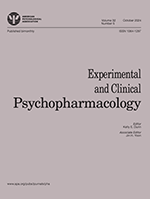
“Geriatric patients often suffer from a long history of pain and have a limited life expectancy.
Cannabinoid receptor agonists like dronabinol may be an effective, low-risk treatment option for geriatric patients with chronic pain.
OBJECTIVES:
The effectiveness and side effects of dronabinol therapy in geriatric patients are analyzed. The effects of the approval requirement are presented.
RESULTS:
By using dronabinol, 21 of the 40 geriatric patients (52.5%) achieved pain relief of more than 30%, 10% of the patients of more than 50%. On average, about four symptoms or side effects related to previous treatment were positively influenced. 26% of patients reported side effects. The rejection rates on the part of the health insurances were 38.7% (group A) and 10.3% (group B).
CONCLUSIONS:
This study is one of the few analyses of the use of Dronabinol in geriatric patients. We show that cannabis-based drugs (in this case dronabinol) are an effective, low-risk treatment option that should be considered early in therapy. Regarding the indication spectrum, further clinical studies and an approval-free test phase are necessary.”
https://www.ncbi.nlm.nih.gov/pubmed/31473816
https://link.springer.com/article/10.1007%2Fs00482-019-00408-1

 “Much of the initial reports for
“Much of the initial reports for  “The neurodegeneration, neuro-inflammation and mitochondrial dysfunction which occur by methamphetamine (METH) abuse or administration are serious and motivation therapeutic approaches for inhibition of these types of neurodegeneration. As we know, METH through Toll-like receptors (TLRs), specially type 4, and NF-κB signaling pathway causes neuro-inflammation and mitochondrial dysfunction.
“The neurodegeneration, neuro-inflammation and mitochondrial dysfunction which occur by methamphetamine (METH) abuse or administration are serious and motivation therapeutic approaches for inhibition of these types of neurodegeneration. As we know, METH through Toll-like receptors (TLRs), specially type 4, and NF-κB signaling pathway causes neuro-inflammation and mitochondrial dysfunction.
 “Both types of
“Both types of  “Medical and recreational cannabis use is increasing significantly, but its impacts on oral health remains unclear.
“Medical and recreational cannabis use is increasing significantly, but its impacts on oral health remains unclear. “Post-traumatic stress disorder (PTSD) is a common psychiatric disorder resulting from a traumatic event, is manifested through hyperarousal, anxiety, depressive symptoms, and sleep disturbances.
“Post-traumatic stress disorder (PTSD) is a common psychiatric disorder resulting from a traumatic event, is manifested through hyperarousal, anxiety, depressive symptoms, and sleep disturbances. “This paper studies the effects of marijuana legalization on neighborhood crime and documents the patterns in retail dispensary locations over time using detailed micro-level data from Denver, Colorado. To account for endogenous retail dispensary locations, we use a novel identification strategy that exploits exogenous changes in demand across different locations arising from the increased importance of external markets after the legalization of recreational marijuana sales.
“This paper studies the effects of marijuana legalization on neighborhood crime and documents the patterns in retail dispensary locations over time using detailed micro-level data from Denver, Colorado. To account for endogenous retail dispensary locations, we use a novel identification strategy that exploits exogenous changes in demand across different locations arising from the increased importance of external markets after the legalization of recreational marijuana sales. “The Endocannabinoid (eCB) system and its role in many physiological and pathological conditions is well described and accepted, and includes cardiovascular disorders. However, the eCB system has been expanded to an “-ome”; the endocannabinoidome (eCBome) that includes endocannabinoid-related mediators, their protein targets and metabolic enzymes, many of which significantly impact upon cardiometabolic health. These recent discoveries are here summarized with a special focus on their potential involvement in atherosclerosis. We described the role of classical components of the eCB system (eCBs, CB1 and CB2 receptors) and eCB-related lipids, their regulatory enzymes and molecular targets in atherosclerosis. Furthermore, since increasing evidence points to significant cross-talk between the eCBome and the gut microbiome and the gut microbiome and atherosclerosis, we explore the possibility that a gut microbiome – eCBome axis has potential implications in atherosclerosis.”
“The Endocannabinoid (eCB) system and its role in many physiological and pathological conditions is well described and accepted, and includes cardiovascular disorders. However, the eCB system has been expanded to an “-ome”; the endocannabinoidome (eCBome) that includes endocannabinoid-related mediators, their protein targets and metabolic enzymes, many of which significantly impact upon cardiometabolic health. These recent discoveries are here summarized with a special focus on their potential involvement in atherosclerosis. We described the role of classical components of the eCB system (eCBs, CB1 and CB2 receptors) and eCB-related lipids, their regulatory enzymes and molecular targets in atherosclerosis. Furthermore, since increasing evidence points to significant cross-talk between the eCBome and the gut microbiome and the gut microbiome and atherosclerosis, we explore the possibility that a gut microbiome – eCBome axis has potential implications in atherosclerosis.”